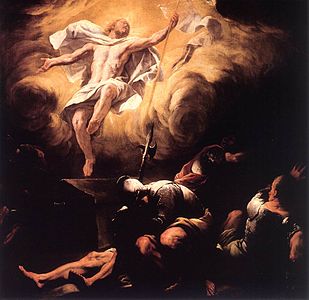
What Easter Really Means
An important new book on the most important act in history:
At this time of year we are especially reminded of how life comes out of death, and much more specifically, how the death and resurrection of Jesus Christ offers those who turn to him in faith and repentance newness of life in this world, but also eternal life with our own resurrection bodies. What a phenomenal reality Easter commemorates.
No other event in human history even comes close to what Jesus did 2000 years ago. His years of earthly ministry, his miracle working and gospel proclamation, his crucifixion, his death, his resurrection, and his ascension are the turning points of human history. The person and work of Christ changes everything, forever.
Millions of words – indeed, billions of words – have been spoken and written about all this. One can never exhaust the wonder, the glory and the majesty of what we celebrate at this time of year. In one sense, words cannot come close to expressing what Easter is all about. And yet God has chosen to reveal himself in words – as well as deeds – so we must try to make do in this regard.
The number of books on the life and work of Jesus would likely also be in the millions. I could pull from my shelves any number of hefty tomes and begin quoting from them. But I need to narrow things down of course. So to help flesh all this out a bit more, let me simply strongly recommend and quote from the brand-new book by Owen Strachan, The Warrior Savior: A Theology of the Work of Christ (P&R, 2024).


The entire volume deserves a full and careful reading, looking as it does at what Christ did for us, and tracing it back through the Old Testament and into the New. But since we celebrate the resurrection of Christ at Easter, let me simply quote from his closing chapter, “The Resurrection of the Crucified.” It contains so many rich truths and grand themes. Let me offer some quotes:
A new humanity is lining up. Christ is leading his pilgrimage out of this place, and many are following in his wake. For these sojourners, the life given to the flesh has ended, and the life given to the Spirit has dawned. It is not that believers in Christ have attained sinless perfection, for we have not and cannot until we go to glory or Christ returns. But it is that our orientation is no longer toward earth, but toward heaven. We are the new pneumatic humanity, a resurrection community, and we are travelling toward the New Jerusalem.
This is spiritual truth. But it has profound implications for our embodied lives. The soul that has already embraced eternal life gains the promise of a body ordered to eternal life. Indeed, our current enfeebled body would not fit the new heaven and new earth if we were only brought back to life after death, our heart simply restarting after a long time in the grave. No, we need a distinctly different body, one clothed in the very power of Christ’s resurrection, a body born in victory and orientated to victory. This body – the glorified body – alone will fit in the cosmos made right by God.
He goes on to say this:
The resurrection entails the total triumph of God over Satan. This triumph, as we have noted, is irreversible. There is no way for Satan to strike back at God and somehow turn back the effects of the resurrection. Jesus walked out of the grave, and did so not as the lone man to taste the Spirit’s resurrecting power, but as the firstfruits, per Paul’s term. Jesus is the head of the new humanity, the true human race created by the blood of Christ and inaugurated in the resurrection of Christ.
So we may say that the resurrection of Christ is not just a miracle. The resurrection of Christ is the gateway into eternity. The resurrection is the sure and certain sign that in this death-dominated realm, there is a way out. Humanity need not die eternally. There is life after the grave. There is hope where none seems to exist. There is the opportunity to live again and never die. This is not because the resurrection stands on its own; it surely does not. As we have been at pains to say, the cross and the resurrection work together to ensure that our two greatest needs, forgiveness of sin and freedom from death, meet their end.
One further quote from this chapter, looking further at how forgiveness and resurrection go together:
The resurrection yields no hope if it does not follow the once-for-all-time propitiatory death of Jesus Christ. A man’s coming back to life, even the God-man’s coming back to life, is but an aberration – not a life giving miracle – without the forgiveness of sins.
But even the language just used is too weak. Christ did not only “come back to life.” Resurrection is not mere restoration, as though the risen Jesus simply picked up where he had left off. Jesus’ rising was not a resumption of prior existence; It was an assumption of glorified existence. So we see, in conclusion, that the cross that changes everything (for by it we are pardoned) is followed by the resurrection that changes everything (for by it we gain spiritual life of the Spirit). In all this, we gain the sure hope of a new body, a powerful body, which like Christ’s resurrection body will not break down or suffer catastrophe.
It is not a long bodily existence that we need, Paul helps us understand, a way to prolong this current duration, even indefinitely (an impossibility, but one that humanity seeks to achieve). It is resurrection that we need, resurrection ordered by the reality of spiritual re-creation onto perfect ontological resolution in the age to come. The cross-work of Christ was perfect, and perfectly met its mark. But the markets opened when the son of God rose to glorified life. The transaction, so to speak, went through; all accounts cleared by the Son’s death showed “paid in full” when the resurrection occurred.
But with so many riches found in this volume, I must offer one more quote – this one being the final paragraphs of his Afterword. He says this:
There is no other work like the cross. No other accomplishment parallels this outcome. No other act in history so demands, deserves, and draws praise, truly unending praise. Jesus was slain, and slain for us. He died to honor and obey his Father, and to lead a host of captives into glory and a joy that does not end and does not fade. While we have breath on this earth, we do well to remember this truth. Christ is worthy of our praise now. Christ will always be worthy of our praise.
Soon, we will be at rest – final rest. We will no longer suffer attack; we will no longer weep; we will no longer roam the earth, seeking our final rest. We will have fullness of peace, fullness of joy, fullness of rest. We will then experience perfect shalom, peace and wholeness and satisfaction without interruption or trial or sadness or pain. Now, at present, we are waiting for this final state. Christ can seem far off. But we must remember this: just as Christ penetrated the darkness when we least expected, so the Warrior-Savior will soon return. He will fight for his people in one last battle, he will destroy the devil once and for all, and then we will live beyond all time with our God.
The one who fought for us at the cross is the one who will deliver us at the last battle. Until that hour, we steel ourselves in the Spirit, and we say – if necessary through gritted teeth, tears on our faces, hands clenched in anticipation:
Worthy is the Lamb who was slain. (Rev. 5:12)
Worthy are you to take the scroll, and to open its seals. (v. 9)
The Lion of the tribe of Judah, the Root of David, has conquered. (v. 5)
Come, Lord Jesus! (22:20)
Amen and amen! That is indeed what Easter is all about. That is why we celebrate it so passionately, so joyfully, and so triumphantly.
[1383 words]



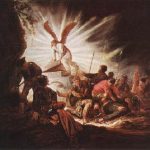

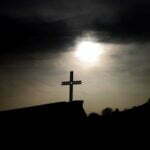





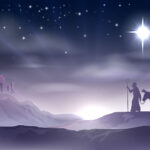




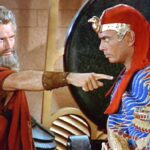

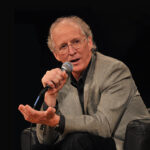

Hi Bill,
Further to the triumphal theme of Owen Strachan’s book, The Warrior Savior: A Theology of the Work of Christ (P&R, 2024), here is a quotation from Matthew Henry (1662–1714), an English Presbyterian minister and famous Bible commentator.
He reminds us of why we can be assured that God the Father has accepted the sacrifice of His Son Jesus as complete payment for our sins.
Henry writes: “The resurrection of Jesus Christ from the dead is the ground or foundation of a Christian’s hope. The resurrection of Christ is the act of the Father as a Judge, of the Son as a conqueror. His resurrection demonstrates that the Father accepts his death in full discharge for our ransom, that he is victorious over death, the grave, and all our spiritual enemies; and it is also an assurance of our own resurrection.”
Source: Matthew Henry’s commentary on 1 Peter 1:3: https://www.biblestudytools.com/commentaries/matthew-henry-complete/1-peter/1.html
Thank you, Bill, for your post of today.
The good news you report in your review of Strachan’s book helps give your readers the right perspective on reality.
Thanks for that John.
Amid all the nonsense about where the term “Easter” came from perhaps you could allow me my two cents worth.
The fact is no one appears to really knows for sure but those who claim it comes from the Babylonian goddess “Ishtar” need to explain why the term appears to have originated in England, which has no known association with the ancient Babylonian goddess at all.
To me the term appears to have come from the Nordic name for the month when the Sun rises due East. Obviously the ancients had good reason to determine when things like the Solstices and Equinoxes occur, especially if you need to navigate the seas or do farming.
The Catholic church determined that Pascha should be celebrated based on the first Sunday after the first full Moon after the Northern Spring Equinox and this is now commonly accepted.
The interesting thing I find about the Equinox is that it is the time when, pretty much, wherever you are in the world, the days and nights are twelve hours each and the Sun rises due East for everyone as well. This is something that, to me, makes the world one somehow because we are all experiencing pretty much the same thing. The same day and night and the accurate, Easterly Sunrise for all.
Scripture speaks of the Messiah coming, like the Sun, from the East and speaks of God sitting on the circle of the Earth, which always reminds me of the constant circle which divides night and day on Earth. The Jewish Temple faced due East with the Messiah’s gate being the Eastern gate.
Somehow this all points, to me, of the oneness God is intending to bring.
This is beyond insulting. The decline of a once great nation – the United States of America.
Epoch Times reports, in an article Headed : Trump Demands Biden Apologize for Proclaiming Easter Sunday ‘Transgender Day of Visibility’
“President Joe Biden has declared March 31, 2024, which falls on Easter Sunday, as “Transgender Day of Visibility,” sparking uproar among conservatives and scathing criticism from former President Donald Trump, who demanded that the president apologize to millions of Christians in the United States.
“Today, we send a message to all transgender Americans … You are America, and my entire Administration and I have your back,” President Biden said in the March 29 proclamation, while boasting of appointing “transgender leaders” to his administration and ending a ban on transgender people from serving openly in the military.”
Most worthy of your special selection from the literature for this Easter . These text read ever so fluidly that it mates me want to buy this book .
Bill Heggers